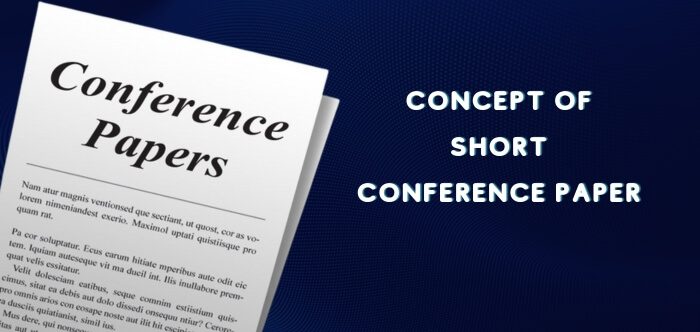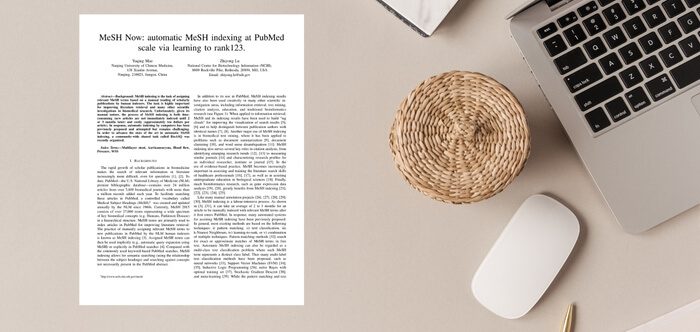In the vibrant arena of academic and professional discourse, conference papers hold a special place. They are concise and focused and serve as platforms for sharing research findings and ideas with a broader audience. Yet, a common dilemma lingers for many scholars and researchers: how long is short conference paper?
A short conference paper should be no more than 4 pages in length. This concise format is ideal for summarizing your research effectively within the constraints of brevity, ensuring a focused and impactful presentation at the conference.
In this blog, we’ll help you find the right length for your conference paper. We’ll consider factors, offer discipline-specific tips, and ensure your research shines. Perfect for all researchers, new or experienced. Let’s make your presentations impactful!
Concept of Short Conference Paper
The concept of a short conference paper holds a crucial place. These papers are concise and targeted, designed to present research findings efficiently within a limited space. Authors must skillfully select content, emphasizing core findings, methodology, and significance while ensuring clarity is not compromised.

Short conference papers offer a strategic means of disseminating research in academic and professional settings. Their brevity encourages authors to prioritize key insights, making them accessible to a wide range of audiences, including busy professionals and newcomers to the field. Despite their succinctness, these papers are potent tools for knowledge exchange and academic recognition.
The concept of a short conference paper underscores the importance of effective communication and concise presentation in the academic world. Whether you’re a seasoned researcher or just starting, mastering this form of scholarly expression, especially when presenting papers in globally organized conferences, can significantly impact your ability to share knowledge, engage with peers, and contribute to your field’s ongoing discourse.
Importance of Short Conference Papers
Short conference papers hold a distinct significance in the world of academia. Despite their brevity, they serve as potent tools for knowledge dissemination and scholarly recognition. Here’s why they are essential:
Accessibility
Short papers are concise and to the point, making research more accessible to a wider audience. Busy academics and professionals can quickly grasp the core ideas, facilitating broader dissemination of knowledge.
Diverse Platforms
Conferences often attract a diverse range of researchers, including those new to the field. Short papers provide an entry point for budding scholars to present their work and receive valuable feedback, making inclusivity and knowledge exchange.
Focused Impact
The limited length of short papers compels authors to distill their research to its essence. This encourages scholars to prioritize their most significant findings and contributions, leading to high-impact presentations.
Efficient Review Process
Short papers are quicker to review, reducing the burden on conference organizers and reviewers. This expedites the dissemination of new research and accelerates the academic discourse.
Varied Research Types
Not all research warrants lengthy exposition. Short papers are suitable for preliminary findings, innovative concepts, and concise case studies, allowing for the publication of a diverse range of research outputs.
How Long is Short Conference Paper?
Within the realm of academic conferences, the inquiry of “How long is short conference paper?” often puzzles both novice and experienced scholars. The ideal length of a conference paper can greatly impact its acceptance and effectiveness.
A short conference paper, typically spanning 4-6 pages, demands precision and clarity in conveying essential research components. It compels authors to distill their findings, methodology, and significance concisely, ensuring that only the most critical information is included. While the optimal length varies by field, the goal remains consistent: to present research effectively and captivate the audience.
Finding the right balance between brevity and substance is crucial when publishing a conference paper. A well-structured short conference paper can be a potent tool for sharing knowledge, raising academic recognition, and sparking meaningful discussions in your field.
Factors Influencing Conference Paper Length
In academic writing, the length of a conference paper is a critical decision that can significantly impact how research is presented and received. As you manage this decision, it’s essential to consider several prominent factors:
Conference Guidelines
Conference organizers often stipulate specific guidelines, including maximum page counts or word limits that authors must strictly adhere to. These guidelines vary widely across conferences and may be influenced by factors such as the conference’s theme, objectives, and available presentation time slots.
Research Complexity
The complexity of your study should guide your paper’s length. Highly intricate research, such as studies involving intricate methodologies or extensive data analysis, may necessitate more detailed explanations and comprehensive analysis.
Field of Study
Different academic fields have unique conventions for paper length. For instance, sciences often favor brevity to quickly convey empirical findings and data-driven results, while humanities may allow for more extensive exploration and exposition.
Audience Expectations
Consider the expectations of your target audience. Specialized conferences may require in-depth technical details, whereas conferences with broader audiences may appreciate a concise and accessible overview.
Depth of Analysis
The depth of your analysis plays a pivotal role in determining paper length. A superficial overview of your research may fit comfortably within a shorter paper, while a comprehensive and in-depth exploration might demand additional pages.
Supplementary Material
If your paper includes extensive supplementary material, such as data tables, charts, graphs, or appendices, this can significantly affect the available space for your primary content. Careful management of supplementary material is crucial.
By taking these factors into careful consideration, authors can overcome the complexities of determining the ideal length for their conference papers, ensuring their research is both effectively communicated and well-received within the scholarly community.
Tips on Maintaining Clarity While Reducing Length
Managing the world of academic conferences can be tricky when you’re trying to make your paper shorter while keeping it clear. Here are some straightforward tips to help you achieve that balance.
Define Clear Objectives
- Begin by defining clear objectives for your paper. What are the key messages and takeaways you want your audience to grasp?
- Ensure that every section and paragraph aligns with these objectives, eliminating any extraneous information.
Prioritize Essential Information
- Identify the most critical information and findings in your research. Focus on presenting these prominently.
- Remove or condense less crucial details and examples to streamline your paper.
Compact Language
- Use concise and straightforward language. Replace lengthy sentences with shorter, more direct ones.
- Avoid redundancies and overly complex phrases that can confuse readers.
Effective Signposting
- Employ clear headings, subheadings, and transitions to guide readers through your paper.
- This helps them manage your content easily, ensuring they don’t miss key points.
Tables and Figures
- Utilize tables, figures, and visual aids to convey complex information quickly and efficiently.
- Ensure that each visual element serves a clear purpose and enhances the understanding of your research.
Peer Review and Editing
- Seek feedback from colleagues or mentors to identify areas where clarity can be improved.
- Carefully edit your paper to eliminate unnecessary words and phrases while preserving the integrity of your research.
By implementing these tips, you can maintain the clarity of your conference paper while successfully reducing its length. This will ensure that your research remains impactful and accessible to your target audience.
Bottom Line
In the world of academic conferences, we’ve explored the question: “How long is a short conference paper?” These concise papers help researchers share their findings and ideas clearly. Short conference papers, usually 4-6 pages, need to be precise and focused, highlighting key points without unnecessary details.
These papers are essential because they are accessible to a wide audience, making it easier for busy academics to understand. They also offer a starting point for new researchers to share their work and learn from others.
Finding the right length for your paper is crucial, as it affects how your research is received. It’s about balancing brevity and substance. Short conference papers, when well-structured, can help you share your knowledge effectively and gain recognition in your field.







